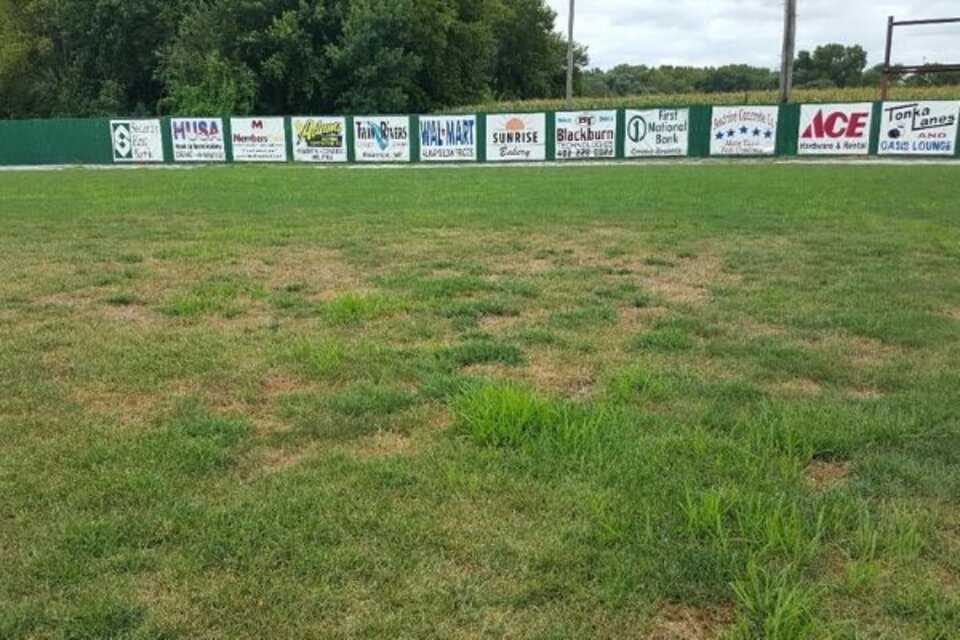Managing Lawn Diseases

Spring is a great time of year. We typically see much more enjoyable weather and we can get outdoors more. Spring is also when we usually see more rain, as they say ‘April showers bring May flowers’. Those April showers can also lead to fungal diseases in our landscapes. This year, we haven’t seen much rain, but we will still see fungal diseases in our lawns.
Disease cycle
Diseases are formed through the ‘disease triangle’. This is how we get diseases to occur in our lawns and landscape plants. The disease needs a susceptible host, a disease pathogen, and a favorable environment to develop. Typically the host and pathogen are there and the disease shows up or begins to develop when we get wet weather.
Dollar spot
Dollar spot is a disease that occurs in the spring or fall but can linger through the summer months as well. It is favored by warm, moist weather with heavy dew periods. If turf is lacking sufficient nitrogen levels, it can intensify the problem. The outlook from the Turf department is that dollar spot could become a problem in our lawns over the next couple of weeks due to an increase in high and low temperatures each day and increased chances of precipitation. Dollar spot can be managed with adequate fertilization and watering. Fungicides can be used if dollar spot is a repeat problem in your lawn or is spreading rapidly.
Summer patch
Summer patch is a disease we see in the summer months, but it is actually caused by infection to the turf roots in the spring. The pathogen infects the roots when the soil temperatures reach 65 degrees and warmer. This may be active all summer but shows up in our lawns during the hot, dry parts of the summer. Summer patch shows up as tan colored turf with no lesions, but when pulled up the roots are brown to black, slimy and wilted, which greatly limits its capacity to absorb water. It is the condition in the baseball field that is shown in the photo. It can be managed by a good fertilization plan and maintaining adequate watering throughout the season.
Brown patch
Brown patch is another disease we see in the summer months. It is favored by hot, wet weather in lawns with excess fertilization and excess irrigation, especially when hot, wet conditions occur overnight. Due to this, it can be managed by avoiding high nitrogen fertilization in the summer months. Choose a low nitrogen fertilizer or opt out of a summer fertilization to help manage this disease. Brown patch leaves tan lesions on the turf blades with a gray edge to the irregularly, circle-shaped spots.
Fairy Ring
Fairy ring is caused by fungi that can sometimes show up as actual mushrooms in the lawn. Typically, the grass grows a very healthy looking circle randomly in the lawn. Sometimes, there is also a circle of dead grass, sometimes there is also a circle of mushrooms. Fairy rings are common in many different lawns, but shows up often in wet spring conditions. Make sure the turf is receiving uniform irrigation and fertilizer applications. There are fungicides for fairy ring, but they aren’t very effective.
These turf diseases can be managed through the use of fungicides, but it isn’t always necessary in a home lawn. Often in our home lawns, we may see the disease sporadically in our lawns and over different years. The foliar affected diseases such as dollar spot, brown patch and ascochyta blight diseases will usually go away on their own and the turf will recover because these are not harming the crown of the plant. Most of the time a management practice can be altered to reduce disease issues, such as watering more uniformly or fertilizing differently.
This article was reviewed by John Fech